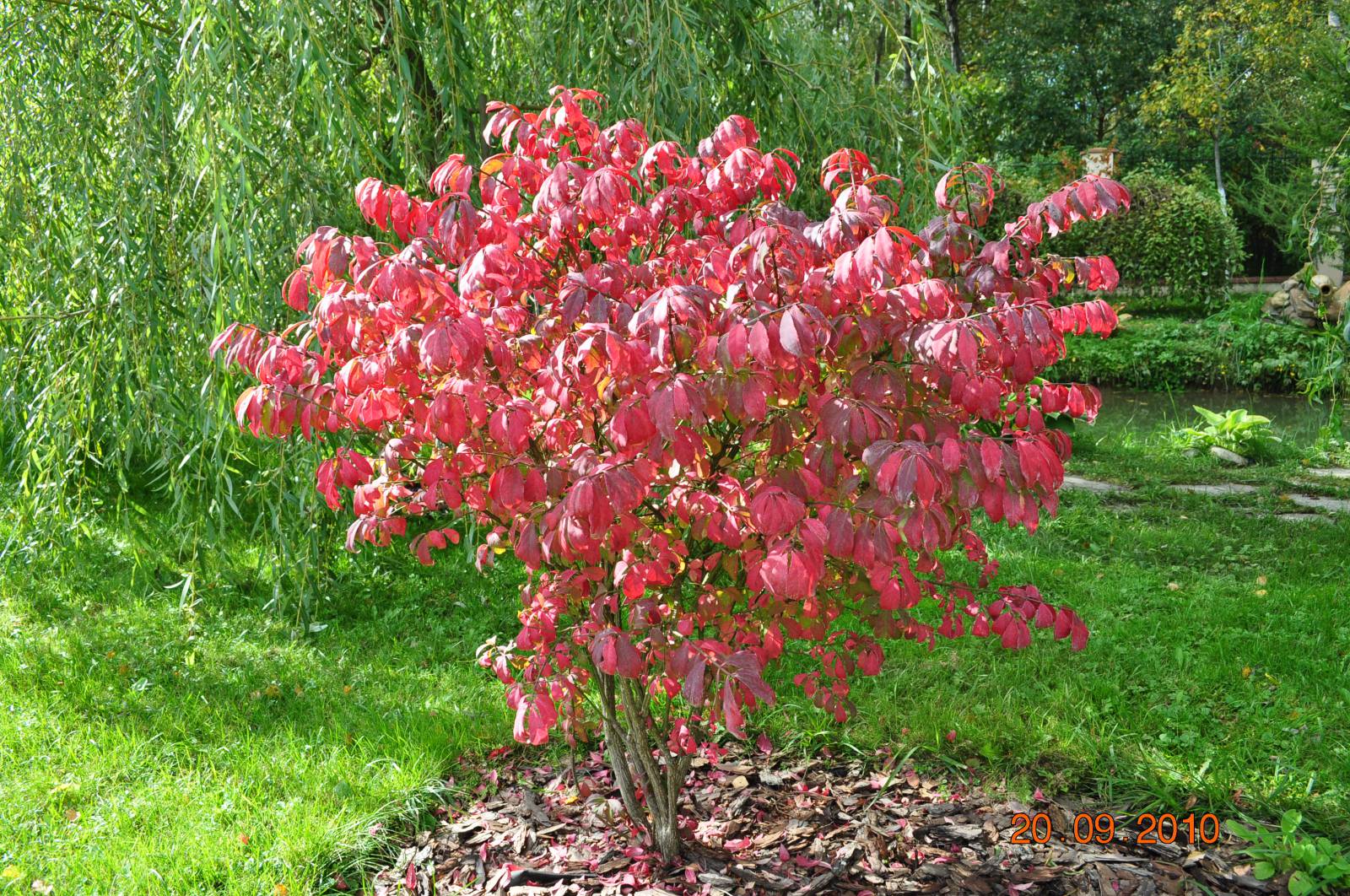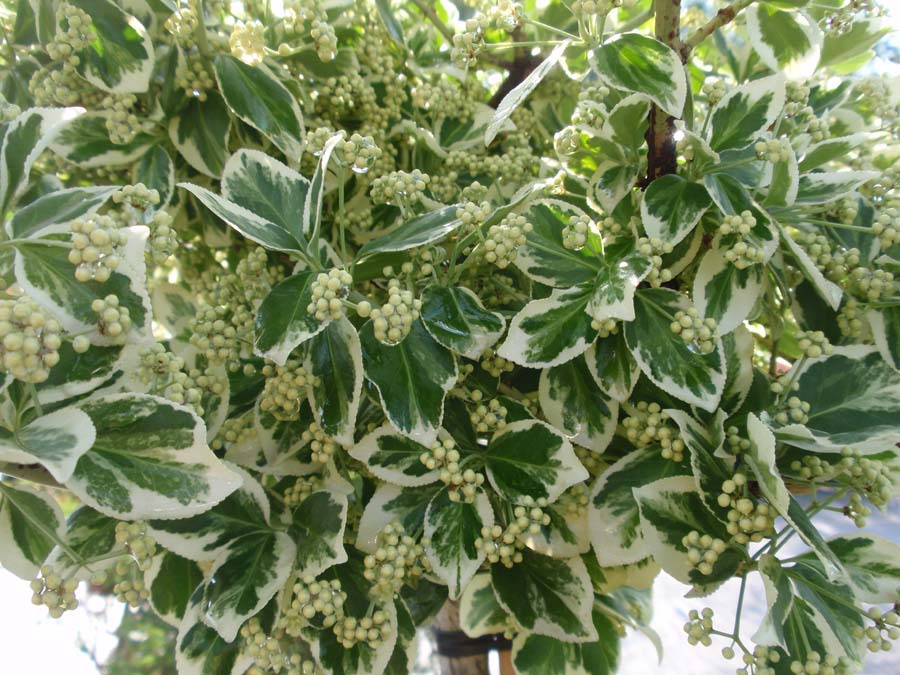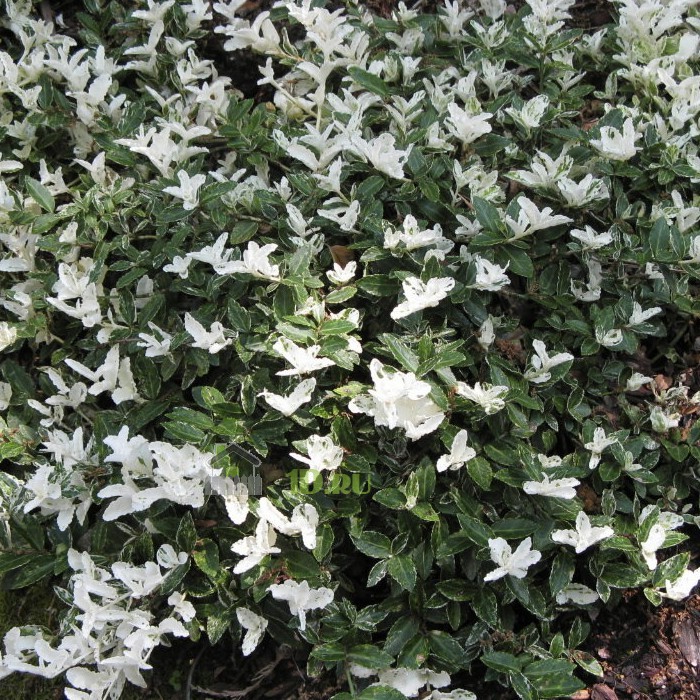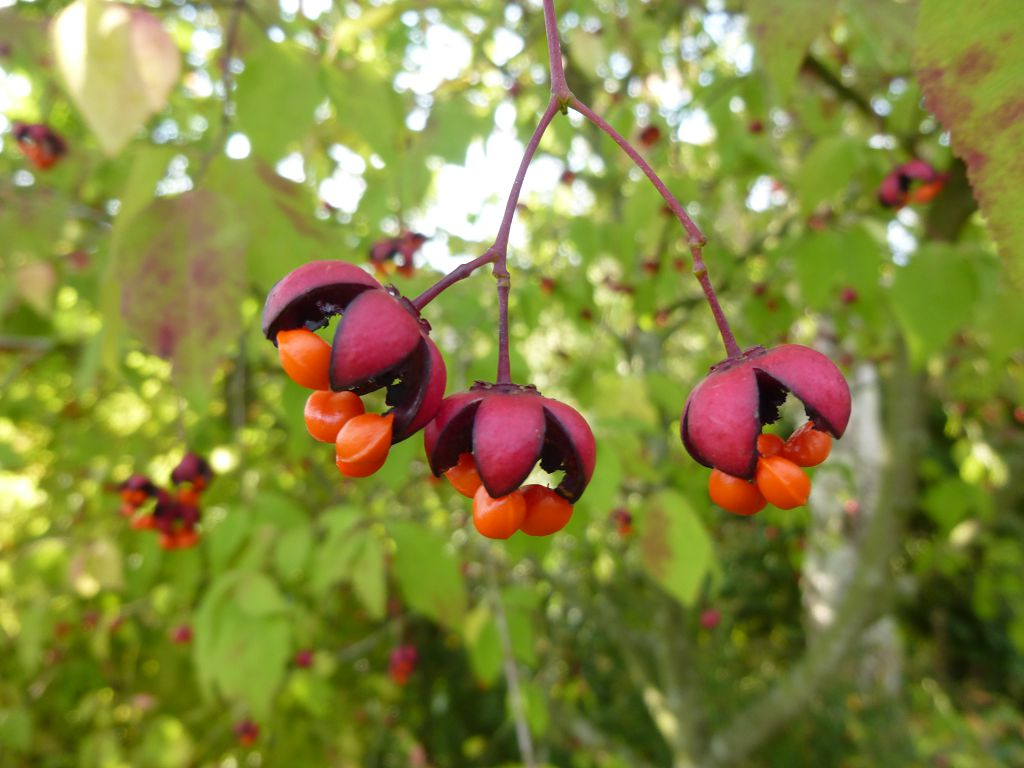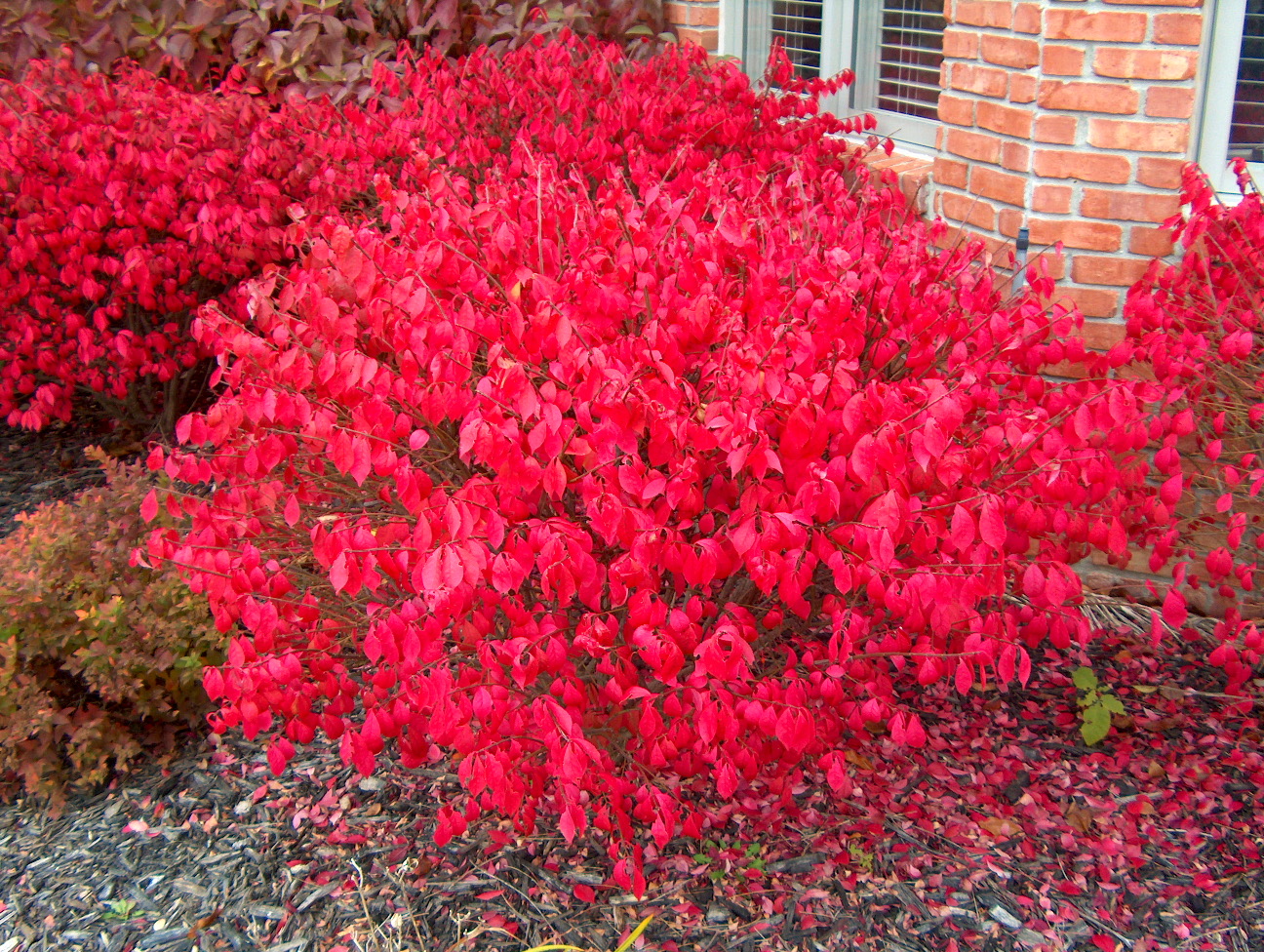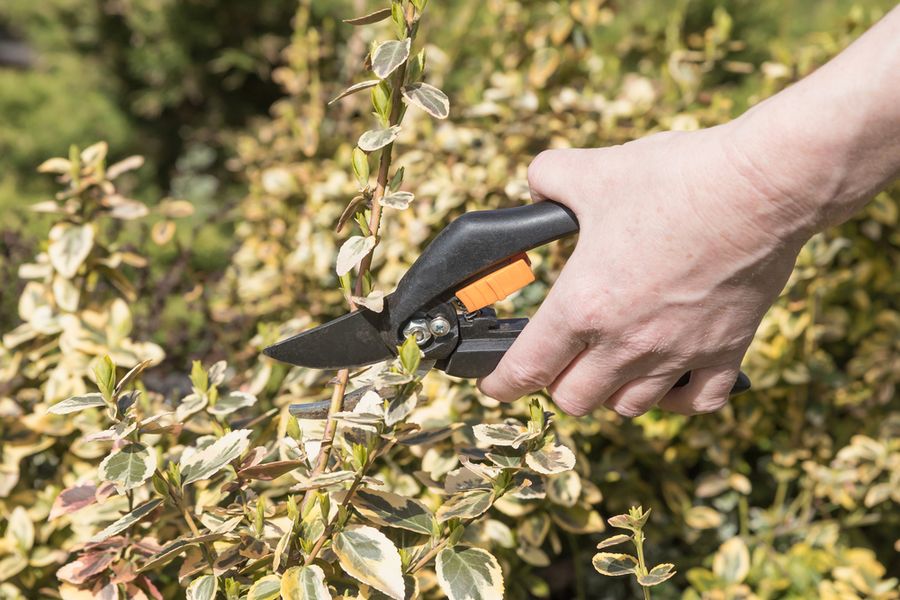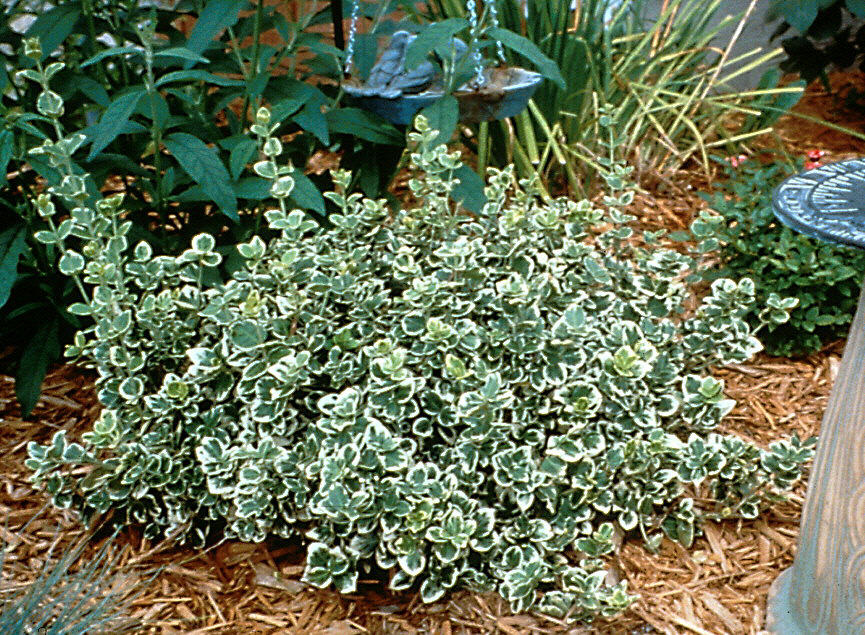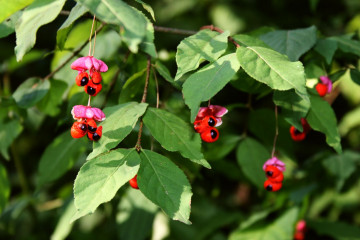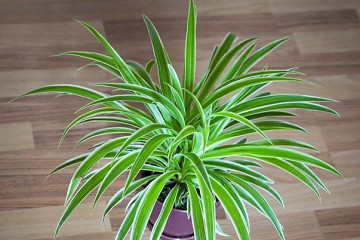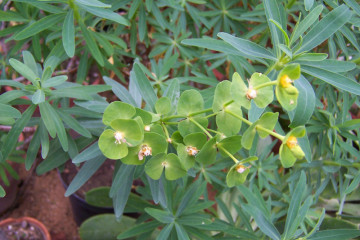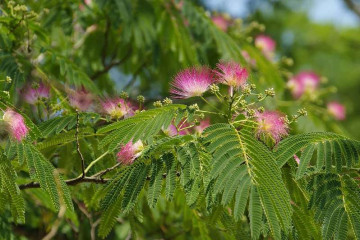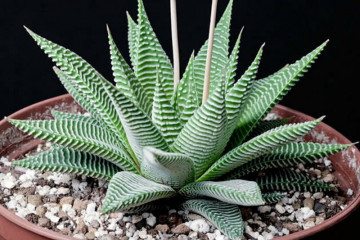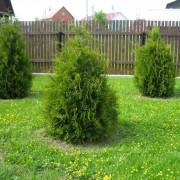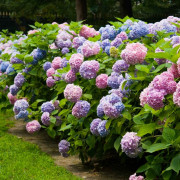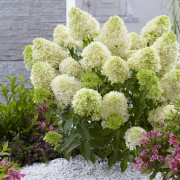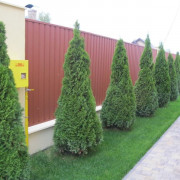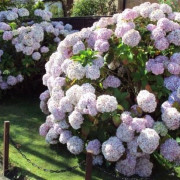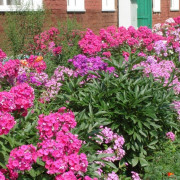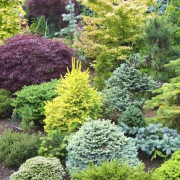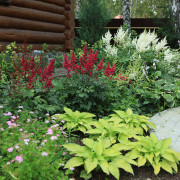Winged euonymus, Forchuna, European and other species
Content:
Many different beautiful plants are used in landscape design, one of the most popular is winged euonymus. According to legend, it was created by the goddess Flora from lost earrings and brooches. There are many varieties of euonymus: maaka, Japanese, besides this there is a domestic variety of indoor euonymus, euonymus creeping with a variegated mane, large-winged and golden (gold), brave, groundcover euonymus. Almost all plants have high winter hardiness, many will decorate the hedge. Indoor euonymus will become an adornment of any windowsill, and reproduction of euonymus is possible by cuttings in water.
The origin and appearance of the winged Euonymus
First found in southeast Asia, it belongs to the Bereskletov family. It grows up to 4 m in height in the wild, and decorative varieties up to 1.2 m.The crown can reach 3 m in diameter.
Flowering occurs at the end of May, when white flowers appear, small with a greenish tint. But most of all, the beauty of the plant manifests itself in the autumn period, when the crown acquires a red color with a lilac tint and the fruits ripen. The main value of an ornamental plant is the size and shape of the crown. To form it requires skill and constant care. The euonymus mix looks beautiful in a flowerbed or in a pot.
Types and varieties of winged spindle tree
Various types of this plant are used to create landscape design. The most popular of them should be described in more detail.
Winged Euonymus Compactus
The winged euonymus grows up to 1.5 m in height, and reaches 2 m in volume. The crown has a regular, well-thickened shape, openwork at the edges. Throughout the summer, the foliage is painted in a bright green hue, with the onset of autumn it becomes red with purple tones. The foliage is round, up to 5 cm long.
Compactus prefers sunny places, if it is planted in the shade, then the decorative properties will noticeably decrease. Also, the plant is demanding for watering.
Winged Euonymus Chicago Fire
The next variety, Chicago Fire, grows up to 1.2 m in height and up to 1.5 m in width. It has a beautiful round crown shape and horizontal shoots. The foliage of this variety has the shape of an ellipse, and the color is dark green.
In the fall, the Chicago fire takes on a bright crimson color thanks to its fruit. The winged Chicago fire is unpretentious to the ground and illumination of the place, in addition, it is quite frost-resistant.
Euonymus Winged Fireball
The winged fireball euonymus variety has a spherical crown, rather thickened and compact.This type of plant grows rather slowly, has tough shoots, they are ribbed and have growths. Growing up, the fireball looks like a large ball, reaching a diameter of 1.5 m.
The leaves of this species are lighter in the lower part, they are green, elliptical in shape, up to 5 cm long. In autumn, the foliage acquires purple hues.
The fireball blooms profusely with small greenish-yellow flowers, which are collected in umbrellas.
The winged fireball should be planted on fertile soils, not overmoistened, and also regularly treated against pests. It is best to plant a shrub in a sunny place, but cultivation in partial shade is acceptable.
Winged Macrophilis Euonymus
Another deciduous species is called macrophilis. It grows up to 1.5 m in height and up to 1.2 m in diameter. The main difference between this variety is its elongated leaves. They are dark green in color, and after ripening the fruits acquire a brick color, while the fruits are of an orange saturated hue.
Eonymus Fortune Harlequin
This variety has historically grown in China, where it is a short plant that spreads along the ground and does not grow more than 30 cm in height. Fortune is distinguished by a variety of foliage colors. Some species remain the same shade and do not shed their leaves in the fall, others can change beyond recognition.
It was this variety that formed the basis for the work of breeders to develop new varieties. It is popular not only in private gardens, but also in city parks and squares.
Harlequin is a dwarf variety, it reaches only 25 cm in height, is planted in the foreground of garden compositions, and often serves as a camouflage for unfortunate places.
Forchuna harlequin has many herbaceous thin shoots with abundant foliage, which is green in color with interspersed beige, white or yellowish tints. In the fall, the foliage turns light pink.
The harlequin should be planted in shady areas. This plant does not tolerate frost. Flowering is carried out by green or beige inflorescences that are in the shape of a ball. The fruits are bright red.
Euonymus Fortune Emerald Haiti
This variety is common in temperate latitudes, as it is the most frost-hardy. It grows equally well both in the sun and in the shade. Leaves for the winter period does not shed, only changes the shade.
This species has dense shoots that spread along the ground and reach a length of 1.5 m. It grows no more than 0.5 m in height. The crown is lush and dense. The most attractive qualities for landscape designs are:
- medium-sized leaves 3 cm long in the form of an ellipse;
- the white edges of the green leaves, which give them an elegant look;
- changing the shade of foliage to pink by autumn;
- fast rooting of shoots.
Fortune Emerald Haiti blends perfectly with garden plants and is suitable for decorating the edges of flower beds and borders.
Eonymus Fortune Blondie
This species can grow up to 60 cm in height and up to 2 m in width. The foliage of the plant is bright yellow with dark green edges. In winter, they take on a pinkish tint. Fortune Blondie tolerates frost well, and also responds positively to pruning and shaping.
Euonymus European
This variety prefers moist soils, bright sun and sheltered areas with little wind. The shrub is capable of reaching 5.5 m in height, and the tree reaches up to 9 m.
The leaves are egg-shaped, large, leathery, so they resemble lace and create a feeling of lightness and airiness. The shrub reaches its peak of beauty by September, when yellow and red spots appear on greenish leaves, then purple and pink shades appear. Gradually, the outfit acquires a solid color, after which the leaves fall off, and bright fruits remain on the bush, after which multi-colored seeds appear.
European spindle tree is of different types, each of which is attractive and has its own fans.
Euonymus European Nana
The dwarf variety of the European species "nana" is creeping, reaches a height of 0.5 m. It has a large number of stems that root quite easily, after which young shoots appear.
The foliage of the plant is bright green, and its lower part is gray-gray, the shape of the leaves is narrow, lanceolate. The shoots are green, and with age they acquire a brown tint.
Euonymus European Red Cascade
Quite a large plant, reaching a height of 3.5 m, and the crown diameter grows up to 2.5 m.It often takes the form of a tree. In autumn, the leaves turn red with a crimson tint, and the fruits are bright orange.
This shrub responds well to crown molding, easily tolerates transplanting, is able to grow in urban conditions, and is resistant to gas and smoke. The crown of a young bush is narrow and straight, with age it becomes wider and takes on a round shape.
Euonymus European Alba
The main difference between this European spindle tree is its white fruits. This creates the effect of flowering, from a distance it seems that these are white flowers of a shrub. Differs in unpretentiousness to the soil, the root system is compact, makes it easy to transplant at any time of the year, as well as tolerate a slight drought. Prefers bright, sunny locations and likes regular pruning.
Euonymus European Aucubaefolia
Aukubolisty shrub, with beautiful green leaves with a yellow center. This is a creeping form of euonymus, the shoots reach 1.2 m. It tolerates drying out of the soil and frost well, does not shed foliage for the winter, and therefore decorates the garden at any time of the year.
Euonymus European Pendula
Ampel type does not require complex maintenance. The leaves are green, gray on the back. It grows as a rather tall plant, the fruits are dark red, bright.
Euonymus European Atropurpurea
The European euonymus shrub of this species prefers sunny areas, but it also tolerates partial shade. Branches of atropurpurea grow upward, also called dark crimson.
It has dark red fruits preceded by a greenish-yellow flowering. The leaves are round, the edges are finely cut, turn bright red in autumn.
Euonymus European Argenteo-variegata
Differs in silvery-spotted foliage, like other species in the fall, it becomes a bright beauty that pleases the eye until winter. Prefers sunny places, tolerates pruning well, looks very harmonious with other garden flowers and plants.
Euonymus European Intermedia
The interlude is quite large in size compared to other species and is bright red in color. The leaves are large, dark green. Euonymus European interlude is very decorative, widely used in design, popular among designers and florists.
Care of euonymus in the garden
For the most part, euonymus are unpretentious, but some species can put forward their own requirements for growing conditions. The size of the plant depends on the species, almost all flowering occurs in May-June, but the main beauty occurs in the autumn, when the foliage acquires fabulous shades, and some species become multi-colored,why they look even more elegant.
Watering mode
Do not overfill the plant with water; it is enough to water it as needed when the topsoil dries out. In autumn and spring, when there is a lot of natural precipitation, the bush should not be watered at all. Waterlogging can adversely affect the condition of the euonymus root system.
Top dressing
The shrub should be fed three times a year. First, during the awakening of the plant - in the spring - nitrogen-containing fertilizers are used. During the flowering period, during the hottest period, the plant should be given a complex mineral fertilizer that will support it in extreme heat. In autumn, it is best to use phosphorus-potassium mixtures for feeding. Humus in the fall will also be a good help and help preserve the root system during the cold season.
Pruning and shaping a spindle bush
All euonymos tolerate crown molding well, and some species are in dire need of it. At the same time, the decorativeness of the plant will remain and unusual paints will look even more spectacular. After shearing, the plant begins to actively release young shoots and becomes thicker and more beautiful.
Preparing for winter
There are many species of euonymus that can easily endure winters and do not require shelter. Despite this, it is better to protect young plants (up to 3 years old) from frost and cover the roots with sawdust, spruce branches or fallen leaves mulch. Some species are best grown only in southern areas.
Diseases
You should also take care of the health of the plant; in case of damage by powdery mildew, treatment with a suitable fungicide is suitable. Various pests are very fond of euonymus, and therefore you need to constantly monitor the state of his health. It is best to protect the plant from the attack of aphids, thrips or spider mites by pretreating with special products that are sold in large quantities in stores.
Euonymus translates from Latin as "beautiful", which is very consistent with the plant. In Moscow and the Moscow region, it is quite possible to grow it on personal plots.
Each gardener will be able to choose euonymus for himself and his garden, these plants are numerous, varied, decorative and unpretentious. They are able to decorate any garden, fence, curb or path. The landscape will be transformed, and the garden will sparkle with all the shades of autumn. The natural beauty of the plant will not leave anyone indifferent.
